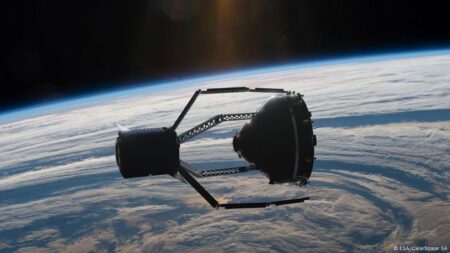Revolutionizing Hypersonic Technology: The US-UK Alliance with Rocket Lab’s HASTE Launcher
In a groundbreaking development for hypersonic technology, the military forces of the United States and the United Kingdom have partnered with Rocket Lab to utilize its HASTE (Hypersonic Accelerator to Suborbital Test Electron) launcher. This collaboration marks a significant milestone in enhancing hypersonic capabilities,which are increasingly recognized as vital in contemporary warfare. The HASTE launcher is engineered for swift and economical testing of hypersonic systems, playing an essential role in bolstering the strategic preparedness of both nations. As defense organizations strive to uphold technological dominance amid a rapidly changing global environment, this partnership highlights an intensified focus on innovation within military capabilities, particularly concerning advanced weaponry and defense mechanisms. This article explores the ramifications of this collaboration and its implications for future advancements in hypersonic technology.
Strengthening Hypersonic Capabilities Through US-UK Partnerships
The decision by US and UK armed forces to adopt Rocket Lab’s HASTE launcher represents a pivotal step towards enhancing their defense strategies. This alliance emphasizes the importance of rapid response times and high-speed military operations that are crucial in modern combat scenarios. The HASTE system is specifically designed to enable a series of test flights aimed at assessing state-of-the-art hypersonic technologies while allowing both nations to conduct vital experiments without incurring significant costs typically associated with conventional missile testing.
The introduction of the HASTE program is set to transform how research into hypersonics is conducted by facilitating:
- Rapid Launch Capabilities: streamlined launches that support quick testing cycles.
- Comprehensive Data Acquisition: Improved observational tools during flight tests.
- Cohesive Military Operations: Enhanced interoperability fostering joint strategies between allied forces.
This innovative approach from Rocket Lab not only offers tactical advantages but also opens avenues for progress within aerospace research domains. As cooperation between these two nations deepens, it reflects a strategic commitment towards maintaining superiority in high-speed defense applications that are reshaping modern military power dynamics.
Strategical Impact of hypersonics on Global Defense Dynamics
The recent alliance involving US and UK militaries alongside rocket Lab signifies a transformative shift within military technology testing frameworks—especially regarding hypersonics. By leveraging the capabilities offered by the HASTE launcher, both countries aim to expedite their development processes for critical systems capable of bypassing traditional defensive measures. This partnership illustrates an increasing emphasis on rapid-response abilities coupled with advanced missile technologies as part of broader national security strategies amidst escalating global tensions.Main strategic impacts include:
- Collaborative Research Efforts: Joint initiatives promote shared intelligence and technological advancements.
- Pace Acceleration for Prototyping: Speeds up countermeasure developments against potential threats from adversaries.
- Navigating Geo-political Landscapes: With rising meaning placed on hypersonics, countries may need to adjust their strategic approaches accordingly.
Additionally, advancements in hypersonic testing could significantly influence international alliances and arms races; prompting nations worldwide to reassess their current defense postures while potentially leading them toward increased investments in similar technologies—a trend likely resulting in heightened expenditures on sophisticated weaponry.
Factors influencing this dynamic include:
| catalyst | Potential Outcome |
|---|---|
| Sustained Development Pace | A quicker rollout of various countries’ hypersonic weapons programs. |
| Burgeoning Defense Budgets | Nations may increase spending levels as they seek solutions against emerging threats posed by new technologies. |
Future Collaborations: Recommendations for Advancing Hyperspace Technology Development
The selection process favoring Rocket Lab’s HASTE launcher signifies notable progress within hyperspace technology evolution among US/UK militaries; thus paving pathways toward future collaborations focused on key areas essential for continued advancement:
Firstly establishing robust partnerships across government entities alongside private aerospace firms can catalyze innovation through resource sharing.
Key collaborative focal points should encompass :
- Joint Research Ventures : developing cutting-edge propulsion systems along materials resilient enough under extreme conditions .< / li >
- < span style ="font-weight:bold;" >Data Exchange Agreements : Facilitating real-time sharing regarding test results & analytical insights streamlining overall developmental processes .< / li >
- < span style ="font-weight:bold;" >Transatlantic Cooperation : Promoting joint ventures leveraging strengths inherent within respective aerospace sectors across both regions .< / li >
< p >
Furthermore , creating structured frameworks enabling collaborative environments will prove crucial validating emerging hyperspace technologies . Implementing cross-national facilities equipped latest monitoring simulation tech can drive necessary developments forward .
Recommendations pertaining these facilities include :Facility Type Location purpose By addressing these focal points , upcoming partnerships can lay groundwork leading towards groundbreaking innovations surrounding hyperspace tech ensuring sustained competitive advantage remains intact throughout evolving landscapes.



